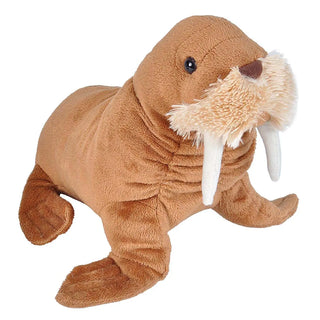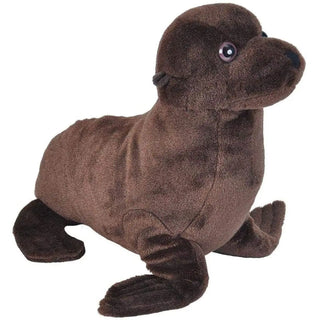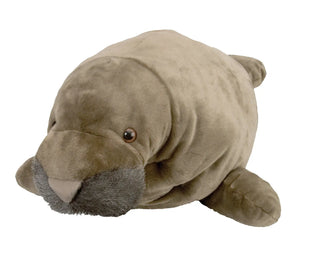Your Search For "walrus" Revealed The Following:
Filter
Active Filters
Walrus Stuffed Animal - 12"
$22.99
- Unit price
- / per
INCLUDES:
- Age:0+
- AnimalType:Walrus
- Brand:Cuddlekins
- Gender:Boy
- Gender:Girl
- Size:15"
- Walrus
$22.99
- Unit price
- / per
Walrus Stuffed Animal - 8"
$12.99
- Unit price
- / per
INCLUDES:
- Age:0+
- AnimalType:Walrus
- Brand:Cuddlekins
- Gender:Boy
- Gender:Girl
- Size:8"
- Walrus
$12.99
- Unit price
- / per
Tube of Polar Figurines with Playmat
$15.99
- Unit price
- / per
INCLUDES:
- Age:3+
- AnimalType:Polar Bear
- Brand:Wild Republic Nature Tubes
- Easter
- Gender:Boy
- Gender:Girl
- Polar Bear
$15.99
- Unit price
- / per
Cuddlekins Platypus Stuffed Animal - 8"
$12.99
- Unit price
- / per
INCLUDES:
- Age:0+
- AnimalType:Platypus
- Brand:Cuddlekins
- Gender:Boy
- Gender:Girl
- Platypus
- Size:8"
$12.99
- Unit price
- / per
Platypus Stuffed Animal - 12"
$22.99
- Unit price
- / per
INCLUDES:
- Age:0+
- AnimalType:Platypus
- Brand:Cuddlekins
- Gender:Boy
- Gender:Girl
- Platypus
- Size:12"
$22.99
- Unit price
- / per
Cuddlekins Eco Jumbo Capybara Stuffed Animal - 30"
$82.99
- Unit price
- / per
INCLUDES:
- Age:0+
- Brand:Cuddlekins Eco Jumbo
- Gender:Boy
- Gender:Girl
- Size:30"
$82.99
- Unit price
- / per
Cuddlekins Eco Sea Lion Stuffed Animal - 12"
$24.99
- Unit price
- / per
INCLUDES:
- Age:0+
- Brand:Cuddlekins Eco
- Features:Eco
- Gender:Boy
- Gender:Girl
- Size:12"
$24.99
- Unit price
- / per
Naked Mole Rat Stuffed Animal - 8"
$12.99
- Unit price
- / per
INCLUDES:
- Age:0+
- AnimalType:Naked Mole Rat
- Brand:Cuddlekins
- Gender:Boy
- Gender:Girl
- Naked Mole Rat
- Size:8"
$12.99
- Unit price
- / per
Manatee Stuffed Animal - 7"
$9.99
- Unit price
- / per
INCLUDES:
- Age:0+
- AnimalType:Manatee
- Brand:Hug'ems
- Easter
- Gender:Boy
- Gender:Girl
- Manatee
- Size:7"
$9.99
- Unit price
- / per
Baby Rhino Stuffed Animal - 8"
$12.99
- Unit price
- / per
INCLUDES:
- Age:0+
- AnimalType:Rhino
- Brand:Cuddlekins
- Gender:Boy
- Gender:Girl
- Rhino
- Size:8"
$12.99
- Unit price
- / per
Sea Lion Stuffed Animal - 15"
$22.99
- Unit price
- / per
INCLUDES:
- Age:0+
- AnimalType:Sea Lion
- Brand:Cuddlekins
- Gender:Boy
- Gender:Girl
- Sea Lion
- Size:15"
$22.99
- Unit price
- / per
Pocketkins Eco Raven Stuffed Animal - 5"
$8.99
- Unit price
- / per
INCLUDES:
- Age:0+
- Brand:Pocketkins Eco
- Gender:Boy
- Gender:Girl
- Size:5"
$8.99
- Unit price
- / per
Manatee Stuffed Animal - 15"
$22.99
- Unit price
- / per
INCLUDES:
- Age:0+
- AnimalType:Manatee
- Brand:Cuddlekins
- Gender:Boy
- Gender:Girl
- Manatee
- Size:15"
$22.99
- Unit price
- / per
Naturekins Harbor Seal Stuffed Animal - 12"
$25.99
- Unit price
- / per
INCLUDES:
- Age:0+
- Brand:Naturekins
- Gender:Boy
- Gender:Girl
- Size:12"
$25.99
- Unit price
- / per
Cuddlekins Eco Dugong Stuffed Animal - 12"
$24.99
- Unit price
- / per
INCLUDES:
- Age:0+
- Brand:Cuddlekins Eco
- Gender:Boy
- Gender:Girl
- Size:12"
$24.99
- Unit price
- / per
Manatee Stuffed Animal - 30"
$76.99
- Unit price
- / per
INCLUDES:
- Age:0+
- AnimalType:Manatee
- Brand:Cuddlekins
- Gender:Boy
- Gender:Girl
- Manatee
- Size:30"
$76.99
- Unit price
- / per
Pocketkins Eco Manatee- 5"
$8.99
- Unit price
- / per
INCLUDES:
- Age:0+
- Brand:Pocketkins Eco
- Easter
- Features:Eco
- Gender:Boy
- Gender:Girl
- Size:5"
$8.99
- Unit price
- / per
You're viewing 1-17 of 17 results

















